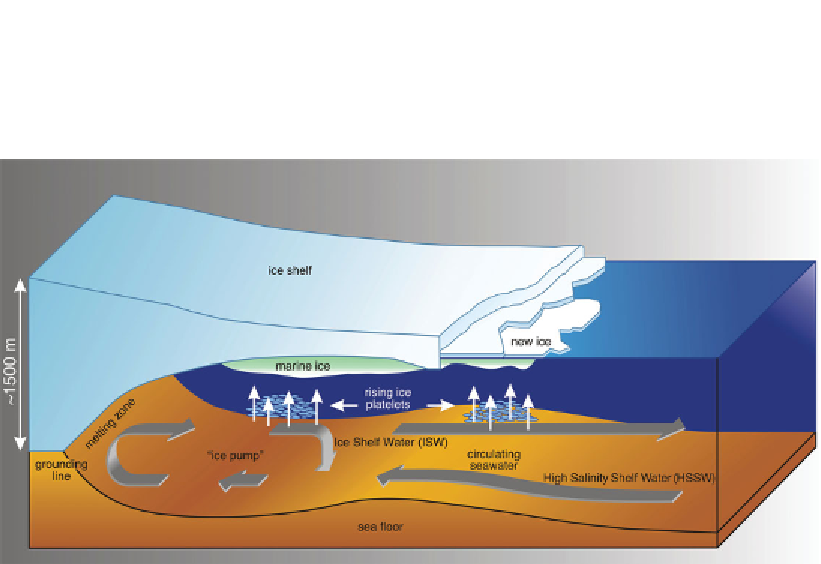Geoscience Reference
In-Depth Information
Figure 5.8
Schematic representation of the oceanic
flow under the ice shelves. (Credit: Gerd Dieckmann,
AWI).
The large-scale distribution of water masses
in the Southern Ocean
Deep ocean currents transport the cold water away from the convective
areas laterally. Since ocean currents vary in speed and direction with depth, layers
are formed by water masses sandwiched between the ones above and below. This
spreading of water masses can be detected on a vertical transect as a tongue of
water, which can slowly mix with adjacent water masses and vary their properties.
A transect from South Africa to the Antarctic continent displays warm and saline
(subtropical) water masses in the north which are limited to the south by inclined
isotherms and isohalines. In mid-latitudes a tongue of fresher water, the Antarctic
Intermediate Water, spreads to the north as part of a shallow circulation cell
which is mainly fed by the ascending Circumpolar Deep Water. It is the densest part
of the Subantarctic Mode Water that is found along the Subantarctic Front. This
shallow circulation cell is of importance for the meridional heat transport and the
uptake of carbon dioxide by the Southern Ocean. The Intermediate Water spreads
into the subtropical and tropical oceans where it feeds the coastal and equatorial
upwelling circulations. In this way the transfer from Circumpolar Deep Water to
Antarctic Intermediate Water represents the upward motion of the global
overturning circulation which mixes water from the top and the bottom of the
water column.



Search WWH ::

Custom Search